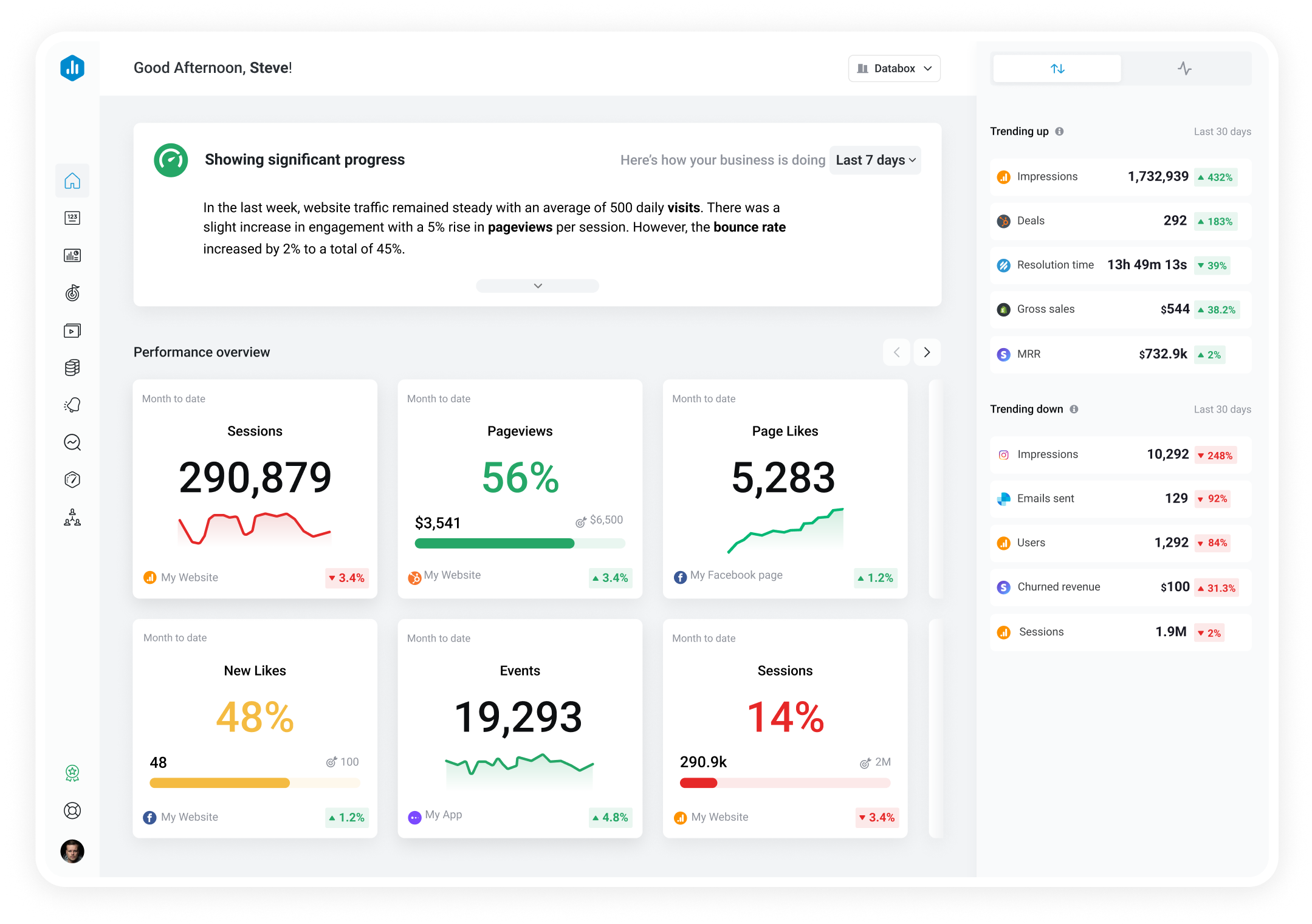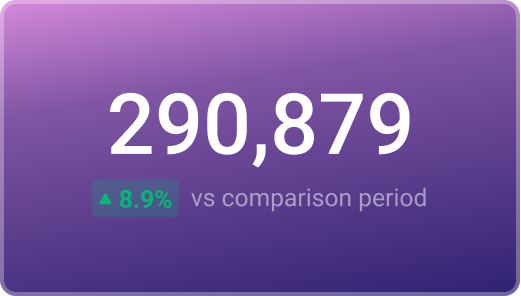Track all of your key business metrics from one screen
GET STARTED
 Shopify
Orders
Shopify
Orders The Orders metric on Shopify represents the total number of purchases completed by customers, providing insights into sales performance, customer behavior and trends.
With Databox you can track all your metrics from various data sources in one place.

Used to show a simple Metric or to draw attention to one key number.
Databox is a business analytics software that allows you to track and visualize your most important metrics from any data source in one centralized platform.
To track Orders using Databox, follow these steps:
 Goals
Goals Scorecards
Scorecards Metric Digest
Metric Digest Metric Builder
Metric Builder Data Calculations
Data Calculations Performance Screen
Performance ScreenOptimize your e-commerce strategy with our Shopify & Xero dashboard. Monitor Orders, Gross Sales, Net Sales, Average Order Value, and Cash Flow for comprehensive insights into sales performance and revenue.


Track GMV, revenue, AOV, conversion rates, and more—powered by data from Shopify and GA4. Designed for e-commerce leaders, marketing teams, and operations managers to drive growth and retention.



Use this Shopify advanced report to share high-level and in-depth metrics of your ecommerce store performance. Present key metrics like Orders, Net Sales, New Customers, and more.

